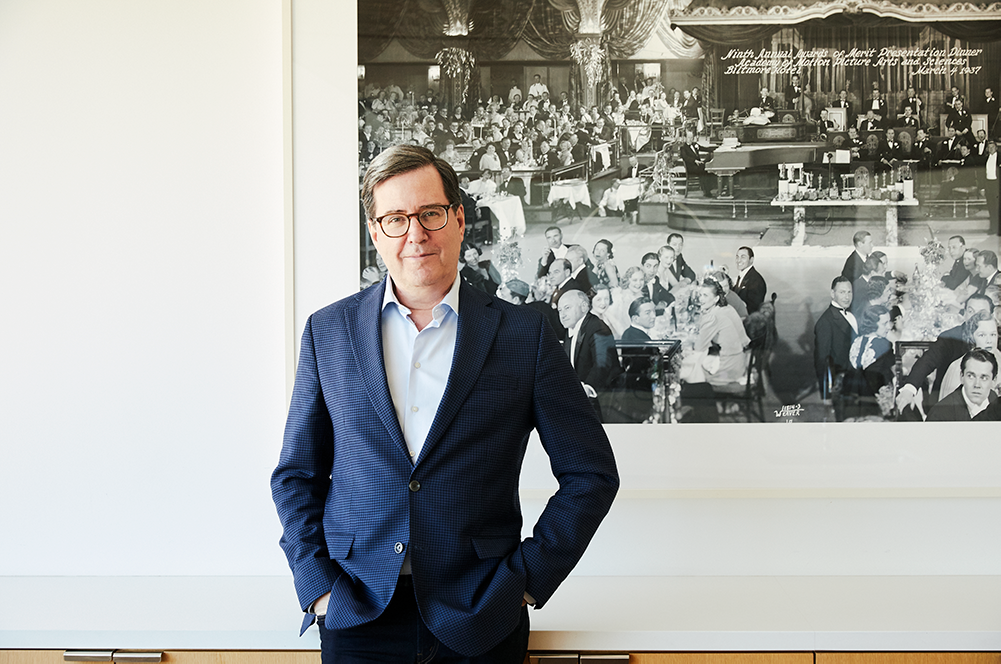
Before David Rubin ’78 was elected president of the Academy of Motion Picture Arts and Sciences, before he became a major Hollywood casting director, and even before he arrived as a student at Amherst College, he was a New York theater fan. As a teenager without much money—the son of a widowed preschool director on Great Neck, Long Island—Rubin would travel to Manhattan and occasionally engage in “second-acting”: he’d sneak in among the paying members of a Broadway audience after intermission, find an empty seat and catch the second act.
Or sometimes he’d write a note, which he would hand to “some gruff old guy chomping a cigar” to pass on to the star of the show. Dear Angela Lansbury, I’m about to see your performance tonight, and I’m a student of the theater, and it would be a tremendous honor if you would leave my name at the stage door so that I could meet you following the performance, he recalls one such note saying. And “at least 95 percent of the time,” he says, it worked: “I would be ushered into the star’s dressing room, and I would have an audience with all of the great leading actors of the day.” This was how he met Lansbury, Tony winner Elizabeth Ashley and two of the singing Andrews Sisters—plus young up-and-comers Marilu Henner, Treat Williams and John Travolta.
“I don’t know what gave me the courage to do it,” he says, “other than my own passion for the theater.”
Rubin followed that passion to Amherst, where he joined the Chi Psi frat, sang with the Zumbyes and majored in dramatic arts and English. Drama professor Walter Boughton became his “mentor in all things theatrical,” casting him in the lead role of A Funny Thing Happened on the Way to the Forum and inviting him to do summerstock productions at the Weston Playhouse in Vermont. And English professor Benjamin DeMott would prove an enduring influence: “His course in Shakespeare set me on a path of reading scripted material with rigor and a deep understanding of how characters interact and advance the narrative in playwriting.”
After Amherst, he returned to New York, where fellow Zumbye Don Howard ’74 hooked him up with a job as an NBC page (yes, just like Jack McBrayer’s character Kenneth on 30 Rock). “The page program at NBC has been for decades, and still is, a kind of training ground for people interested in production work,” says Rubin. It enabled him to usher at Saturday Night Live and to serve as a production assistant on the show’s “Weekend Update” segment.
The departure of SNL’s original cast sent Rubin and many colleagues searching for new jobs. He began working for Mary Goldberg, who had chosen actors for New York’s Shakespeare Festival, the sitcom Rhoda and the film Alien, and had just risen to head of casting at NBC. Until then, Rubin says, “I truly did not know that the job of casting director existed.” He quickly realized, though, that all the time he’d spent getting to know actors onstage and backstage, and all the hours analyzing scripts in DeMott’s classes, meant the job was “an amazing fit” for him—or perhaps it’s more accurate to say he was amazingly fit for it.
“But I wasn’t at NBC in the casting office for long,” he says, “because Mary Goldberg got a phone call from a great film director, Miloš Forman, who asked her to cast his film Ragtime. And she decided to leave the network and asked me to go with her.”

